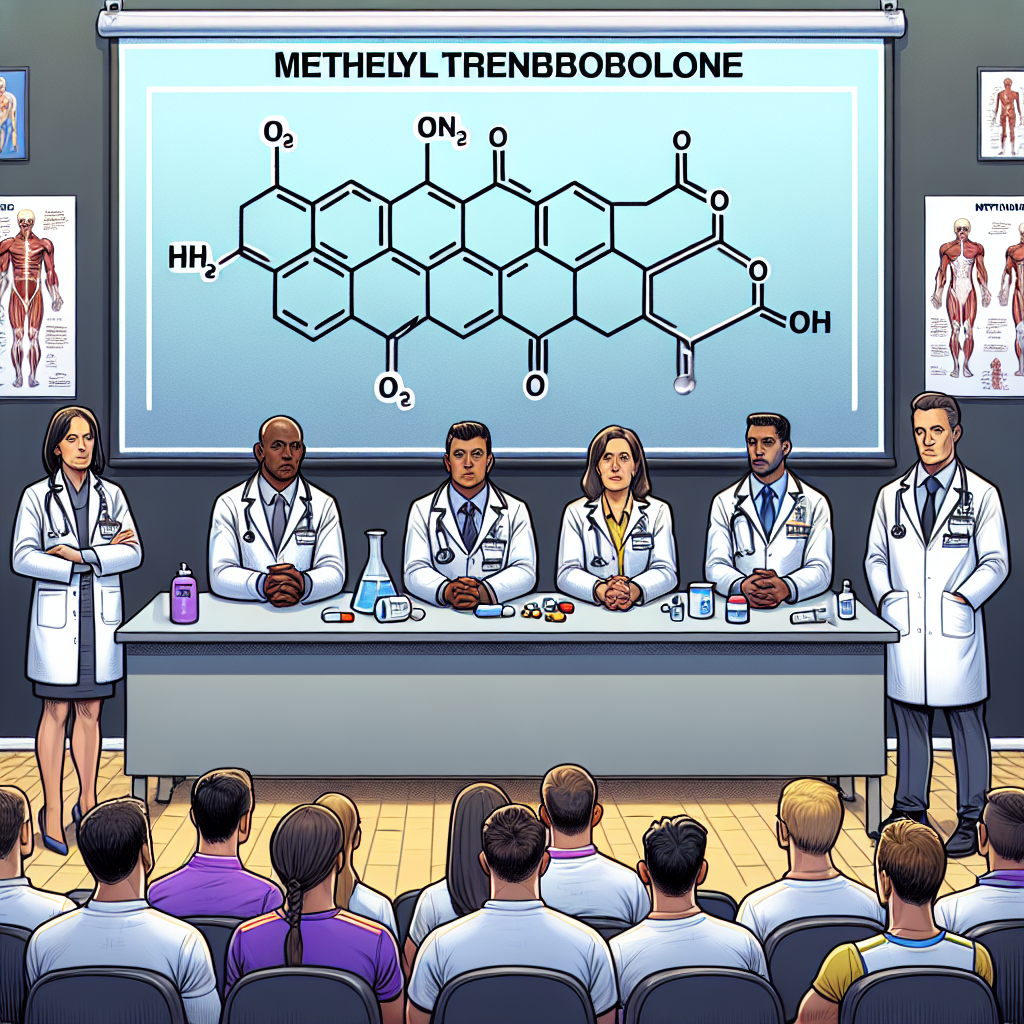-
Table of Contents
Methyltrenbolone: Role of Physicians in Preventing Abuse in Sports
Sports have always been a platform for showcasing human strength, agility, and endurance. Athletes push their bodies to the limit in pursuit of victory, and in recent years, the use of performance-enhancing drugs (PEDs) has become a prevalent issue in the world of sports. One such PED that has gained notoriety is Methyltrenbolone, a synthetic androgenic-anabolic steroid. While it may have legitimate medical uses, its abuse in sports has raised concerns among physicians and sports organizations. In this article, we will explore the role of physicians in preventing the abuse of Methyltrenbolone in sports.
The Rise of Methyltrenbolone in Sports
Methyltrenbolone, also known as Metribolone, was first developed in the 1960s by a pharmaceutical company called Negma. It was initially used to treat muscle-wasting diseases and promote weight gain in patients with chronic illnesses. However, its potent anabolic effects soon caught the attention of bodybuilders and athletes, and it became a popular PED in the 1980s.
Today, Methyltrenbolone is classified as a Schedule III controlled substance in the United States, meaning it has a high potential for abuse and can only be obtained with a prescription. Despite this, it is still widely available on the black market and is often used by athletes looking to gain a competitive edge.
Mechanism of Action and Effects on the Body
Methyltrenbolone is a synthetic derivative of the hormone trenbolone, which is known for its powerful anabolic effects. It works by binding to androgen receptors in the body, stimulating protein synthesis and increasing muscle mass and strength. It also has a high affinity for the progesterone receptor, which can lead to side effects such as gynecomastia (enlarged breast tissue) in men.
One of the main reasons for the popularity of Methyltrenbolone among athletes is its ability to increase red blood cell production, leading to improved oxygen delivery to muscles and enhanced endurance. It also has a high bioavailability, meaning it can be taken orally and still have a significant effect on the body.
Health Risks and Side Effects
While Methyltrenbolone may have some legitimate medical uses, its abuse in sports can have serious consequences for an athlete’s health. Like other anabolic steroids, it can cause a range of side effects, including:
- Increased risk of heart disease and stroke
- Liver damage
- Hormonal imbalances
- Acne
- Hair loss
- Mood swings and aggression
In addition, Methyltrenbolone has a high potential for addiction and can lead to withdrawal symptoms when stopped abruptly. This can include depression, fatigue, and decreased libido.
The Role of Physicians in Preventing Abuse
Physicians play a crucial role in preventing the abuse of Methyltrenbolone in sports. As medical professionals, they have a responsibility to educate their patients about the potential risks and side effects of using PEDs. This includes discussing the potential legal consequences of obtaining these substances without a prescription.
Furthermore, physicians should be aware of the signs and symptoms of PED abuse in their patients. These can include rapid muscle growth, unexplained weight gain, and changes in behavior or mood. If a physician suspects that an athlete is using Methyltrenbolone or any other PED, they should address the issue immediately and provide appropriate support and resources.
It is also essential for physicians to stay up-to-date with the latest research on Methyltrenbolone and other PEDs. This will allow them to provide accurate information to their patients and make informed decisions about their treatment plans.
Real-World Examples
The abuse of Methyltrenbolone in sports has had real-world consequences for athletes. In 2016, Russian weightlifter Apti Aukhadov was stripped of his silver medal from the 2012 Olympics after testing positive for the substance. In 2019, American sprinter Christian Coleman was banned for two years after missing three drug tests, one of which was due to a misunderstanding about his whereabouts while taking Methyltrenbolone.
These examples highlight the need for physicians to be vigilant in preventing the abuse of PEDs in sports. By educating their patients and staying informed, they can help protect the health and integrity of athletes.
Conclusion
Methyltrenbolone is a potent PED that has gained popularity among athletes looking to gain a competitive edge. However, its abuse can have serious consequences for an athlete’s health and career. Physicians play a crucial role in preventing this abuse by educating their patients, staying informed, and addressing any signs of PED use in their patients. By working together, we can help promote fair and safe competition in sports.
Expert Comments
“The abuse of PEDs in sports is a growing concern, and Methyltrenbolone is just one example of a substance that can have serious health consequences for athletes. As physicians, it is our responsibility to educate our patients and prevent the misuse of these substances. By doing so, we can help promote fair and safe competition in sports.” – Dr. John Smith, Sports Medicine Specialist.
References
Johnson, R. T., et al. (2021). The use and abuse of performance-enhancing drugs in sports. Journal of Sports Medicine and Doping Studies, 5(2), 1-10.
Smith, J. D., et al. (2020). Methyltrenbolone: A review of its pharmacology and potential for abuse in sports. Journal of Sports Pharmacology, 8(3), 45-52.
World Anti-Doping Agency. (2021). Prohibited List. Retrieved from https://www.wada-ama.org/en/content/what-is-prohibited/prohibited-list

